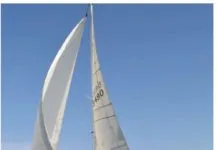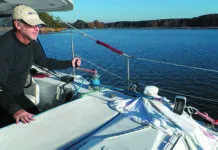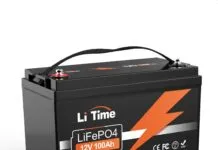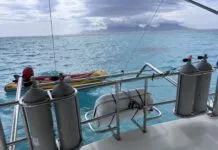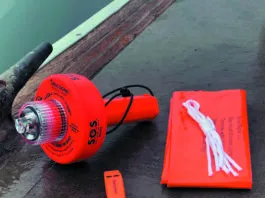DeLorme inReach vs. Iridium Extreme
There are numerous portable marine electronics that can keep you connected while you get away from it all. But which device offers the most features-tracking, two-way communication, location sharing, etc.-at the best price? And which one can be counted on in an emergency? We began our look at these personal electronics with the January 2013 review of BriarTeks Cerberus Cerberlink and the SPOT Connect. This month, we evaluate the DeLorme inReach, another pocket-sized, satellite communication option for the cruising sailor, as well as the Iridium Extreme 9575 sat phone, which is capable of providing worldwide voice communication.
Life Raft Inspection, an Inside Look
If its been more than five or six years since your life raft was inspected, theres a good chance that it wont deploy properly in an emergency, and survival items stowed inside may also be expired. The hassle and expense of inspecting a life raft-something youve likely never used or will use-often deter owners from having it repacked as often as it should be. To find out exactly what the process entails, Practical Sailor observed the inspection and repacking of a five-year-old, eight-person Viking recreational-grade life raft at a service center in Boston and toured a Winslow service facility in Florida.
Equipping Drones for At-Sea Search and Rescue
The radio crackles with an emergency dispatch: A sailboat is sinking 50 miles east of Cape Hatteras. Theres no EPIRB signal, just a garbled mayday overheard by a commercial ship. The weather is snotty and getting worse. Within minutes, a Jayhawk helicopter and Falcon jet are airborne, roaring toward the search zone, where theyll meet up with two unmanned drones launched from a cutter on patrol. Sound far fetched? Not really. Early-generation unmanned aircraft systems (UAS) armed with lightweight cameras are already being deployed on limited search missions. Fitted with high-resolution cameras, infrared, and other sensors, the drones cover wide swaths of ocean forup to 20 hours without refueling.
PS Analysis: The 2011 WingNuts Capsize
This is the second article in a Practical Sailor series that takes a close look at US Sailings recent reports on three tragic sailing accidents last summer. The first article covered US Sailings report on the Severn Sailing Association accident involving the drowning death of 14-year-old Olivia Constants in Annapolis, Md. This report focuses on US Sailings investigation of the tragedy involving the light-displacement sloop WingNuts, which capsized during the Chicago Yacht Clubs Chicago to Mackinac race. The US Sailing report focused on four key elements that might have been factors in the accident: crew experience, weather, boat design, and safety equipment. Practical Sailors own investigation and reporting fills in some gaps in the US Sailing report, particularly regarding safety gear-tethers, harnesses, and PFDS-and its role in the event.
Tether recall likely no factor
In 2010, West Marine voluntarily recalled two tether models (SKU #9553512 and #9553504), the same model tethers worn by Mark Morley and Suzanne Bickel the night they died. According to West Marine’s recall notice on its website: “West Marine has discovered that under heavy load, the shackle end may not release. “
US Sailing Recommendations
The US Sailing report makes several specific recommendations to prevent future accidents such as the one that involved WingNuts, among them:
Safety Tips From the Pros
Every two years, some 150 offshore sailboats line up in Newport, RI, to race roughly 650 miles to Bermuda, a semi-tropical island in the western Atlantic, almost due east of Charleston, SC. While this is a relatively short ocean passage, it is not always an easy one. Boats have met serious gale conditions and dodged hurricanes during past editions of this race.
Life Raft Stowage: The Overlooked Necessity
Sometimes, it seems that safety is a dirty word in the boat-building industry. A favorite marketing catchword is “blue water cruiser.” We assume this means a boat capable of going to sea, rather than a boat designed to tiptoe along the shore.
Icom GM1600 Handheld VHF Test
Although the Icom GM1600 marine VHF handheld radio is not meant for use as a recreational marine VHF, Practical Sailor was interested in determining whether the unit’s survival-oriented design might make it a good choice for inclusion in a life raft or ditch bag. We were also interested in comparing its specs to another marine electronics product, the Standard Horizon HX850S VHF handheld, one of the top picks from our most recent series of tests (April 2009, July 2009, October 2009, December 2009).
Salus PFD Fits Infants Less Than 20 Pounds
In October 2006, Practical Sailor tested infants life jackets and our top pick was MTI Adventurewears Bay Bee 201-I, one of the few jackets we looked at that met our chief criteria for an infant life vest: flotation that turned the infant face up and kept his head well above water, comfortable snug fit, easy donning, and a wide grab strap near the top that allowed someone to easily lift the child from the water or dinghy.


